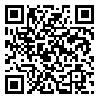BibTeX | RIS | EndNote | Medlars | ProCite | Reference Manager | RefWorks
Send citation to:
URL: http://rjms.iums.ac.ir/article-1-1243-en.html
Background & Aim:�The purpose of this study was to examine the development of body part identification in very young children. Body part identification is defined as the ability to point to body parts on a doll. The second part of this study compared body part identification on a doll with body part identification on the self in 1 to 4-year-old children. There are so many evaluations carried out in western countries,but they aren’t useful for different races, and if some of them are,there is no sufficient information available. Therefore, we decided to survey body part identification in our own country.
Patients and Method: This cross-sectional study was performed on 90 children in the south of Tehran
Results: The findings showed that there were significant differences between three age groups (p<.001). There was no significant difference between two gender groups,i. e. boys and girls, in mean scores of body identification on the self in all age groups(p<0. 05),but there was a significant difference between two gender groups in body identification on a doll in 2-3 and 3-4 year-olds(p<0. 05). Finally, there was no significant difference between body identification on the self and on a doll(p<0. 05).
Conclusion: These results have several implications for the assessment of body part identification in young children. First, since 1-4-year-old children appear to be able to point to body parts both on a doll and on themselves, they can be asked to point to body parts either on a doll or, if they are reluctant,on themselves. Second,the children who are unable to point to body parts may be at risk for delays in language, cognition, and body scheme developmenttherefore,they should be screened or evaluated further.
| Rights and permissions | |
 |
This work is licensed under a Creative Commons Attribution-NonCommercial 4.0 International License. |





